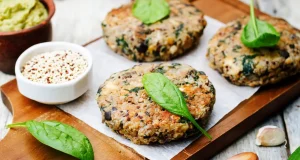HOW AI CAN BUILD A DIET PLAN

The most well-known AI tool is ChatGPT. This exceptionally versatile software can assist us with daily inquiries, travel planning, email responses, and even as a personal assistant. Today, we will focus on how ChatGPT can serve as your nutritional assistant and AI diet planner. It’s crucial to emphasize that this tool does not replace the need to consult a medical professional.
Diet Planning
Firstly, it’s essential to understand that GPT does not think independently; it provides recommendations based on prevailing trends and popular searches on the internet. Consider it a funnel: the more general your prompt, the more basic the result. To obtain a functional and personalized meal plan, provide as many details as possible about yourself.
- Body Composition: Include your height, weight, age, and, if possible, body fat percentage. You can use online tools like a body fat calculator for average data.
- Dietary Restrictions: Mention any intolerances, such as gluten or lactose, or dietary preferences, such as vegan or vegetarian.
- Personal Goals: Set a clear objective with a timeline, such as gaining 5kg in three months or losing 10kg in the same period.
- Macronutrients: Request a breakdown of total calories and macronutrients for each meal, along with daily totals.
- Quantities: Ask for the quantities of each meal specified in your preferred measurement units like grams, ounces, or tablespoons.
- Physical Activity: Add information about which type of physical activity you do, the intensity, and frequency.
Prompt Example: “I am Andrea, 42 years old, 65kg, 1.75 meters tall, and I have around 25% body fat. I follow a vegetarian diet and want to gain 5kg of muscle in 3 months. I go for a 5km run 3 times a week and attend Pilates classes on the weekend. Based on my needs, elaborate a meal plan that breaks down the total calories and macronutrients for each meal and the daily total. Don’t forget to specify the quantities of each meal in grams.”
Now hit the enter button, and let’s see what we get!

Personalize It
Now, you might find yourself with a functional AI diet plan that lacks flavor or doesn’t fit your routine. AI won’t consider taste, food pairing, or your daily schedule unless specified. Provide additional guidelines to ensure your meal plan is enjoyable, efficient, and tasty. For instance, if your routine starts at 9 AM and you prefer to have four meals a day—breakfast, lunch, an afternoon snack, and dinner—but lack appetite in the morning and prefer a larger lunch, communicate these preferences. Suggest specific foods you enjoy, like scrambled eggs for breakfast or a salad for your afternoon snack.
Including your cultural background can further refine AI recommendations to match your usual diet better, considering different needs for someone with Italian, American, or Indian tastes.

Make it Flexible
Life is unpredictable, and some days, you might struggle to follow a strict AI diet or simply get tired of eating the same meals. Instruct GPT to provide at least three meal substitution options that align with your calorie and macronutrient goals. This flexibility allows for adjustments based on unforeseen events or simply a desire for variety.
Following these steps, you will likely achieve a plan tailored to your needs. However, minor adjustments may still be necessary, as AI should not replace professional medical advice. For precise and sustainable results, always consult a nutrition expert.
Keep reading our Wellness Journal for more wellness tips, and don’t forget to follow us on Instagram to receive your daily dose of inspiration!





